There are many interesting facts about the Greek flag. In this article, I have listed some details about the national flag of Greece, including some lesser-known trivia!
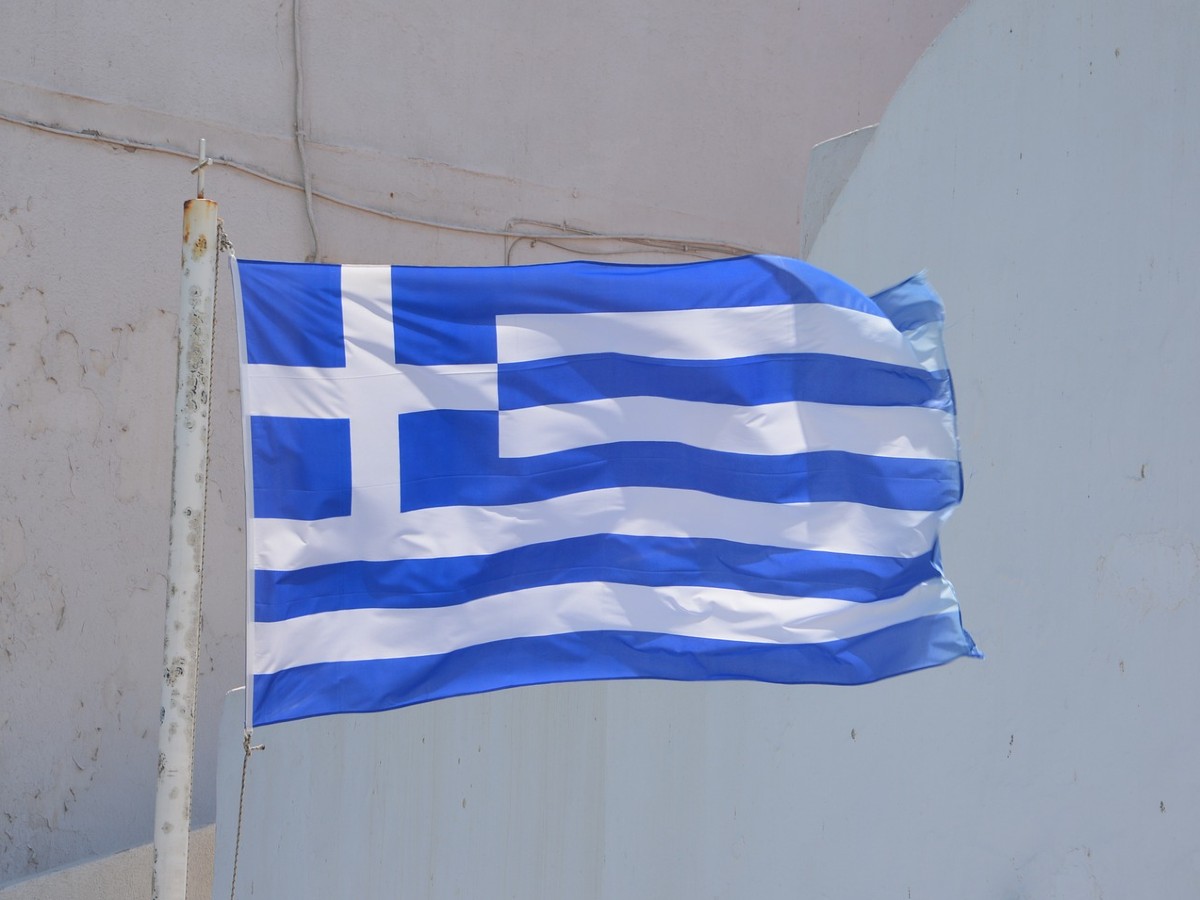
Information about the flag of Greece
Greece’s flag is one of the country’s most instantly recognizable symbols. It consists of nine horizontal stripes of blue alternating with white, and a white cross on a blue background on the upper left corner.
The Greek flag reflects the nation’s history, unity, and Christian Orthodox faith. You can see it all around the country – on buildings, public areas, ferries, and sometimes on private balconies.
But when and how was the Greek flag created, and was it always blue and white? Read on for some interesting stories!
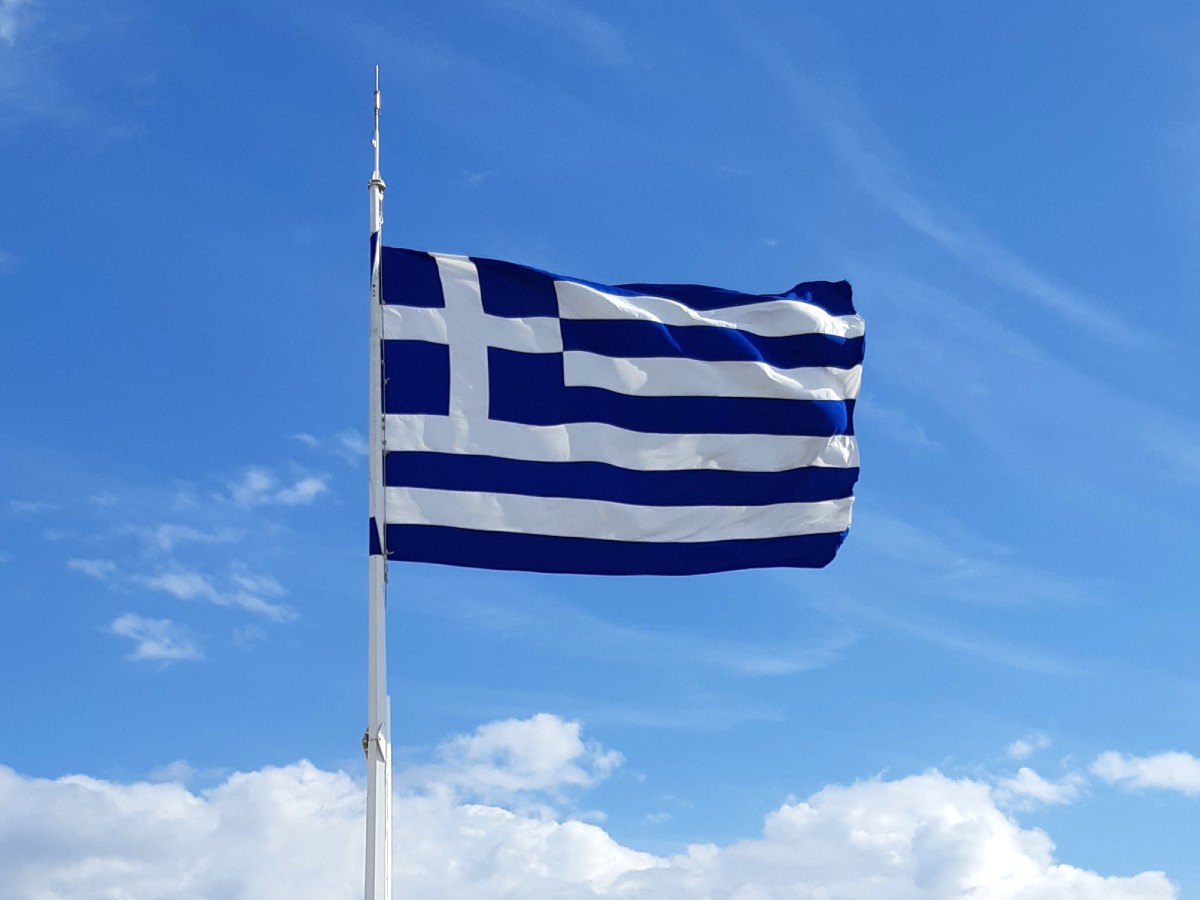
Ancient Greece – Flags, symbols and colors
Let’s go back to Ancient Greece for a start. As you probably know, the concept of a “country” back then was very different to what we know today.
Still, the concept of a flag / symbol is several millennia old, though its exact origins remain unknown.
Ancient Greeks engraved symbols, letters and animals on objects like weapons, shields and ship masts. A symbol used widely during those times was the swastika, which became better known during the 20th century.
It appears that large red flags made of fabric were introduced during the era of Alexander The Great. These were attached to the long spears used by the Macedonians, called Sarissa, and were used to signal the beginning or the end of a battle.
In later centuries, those flags co-existed with the Roman flags, which depicted a golden eagle on a black background.
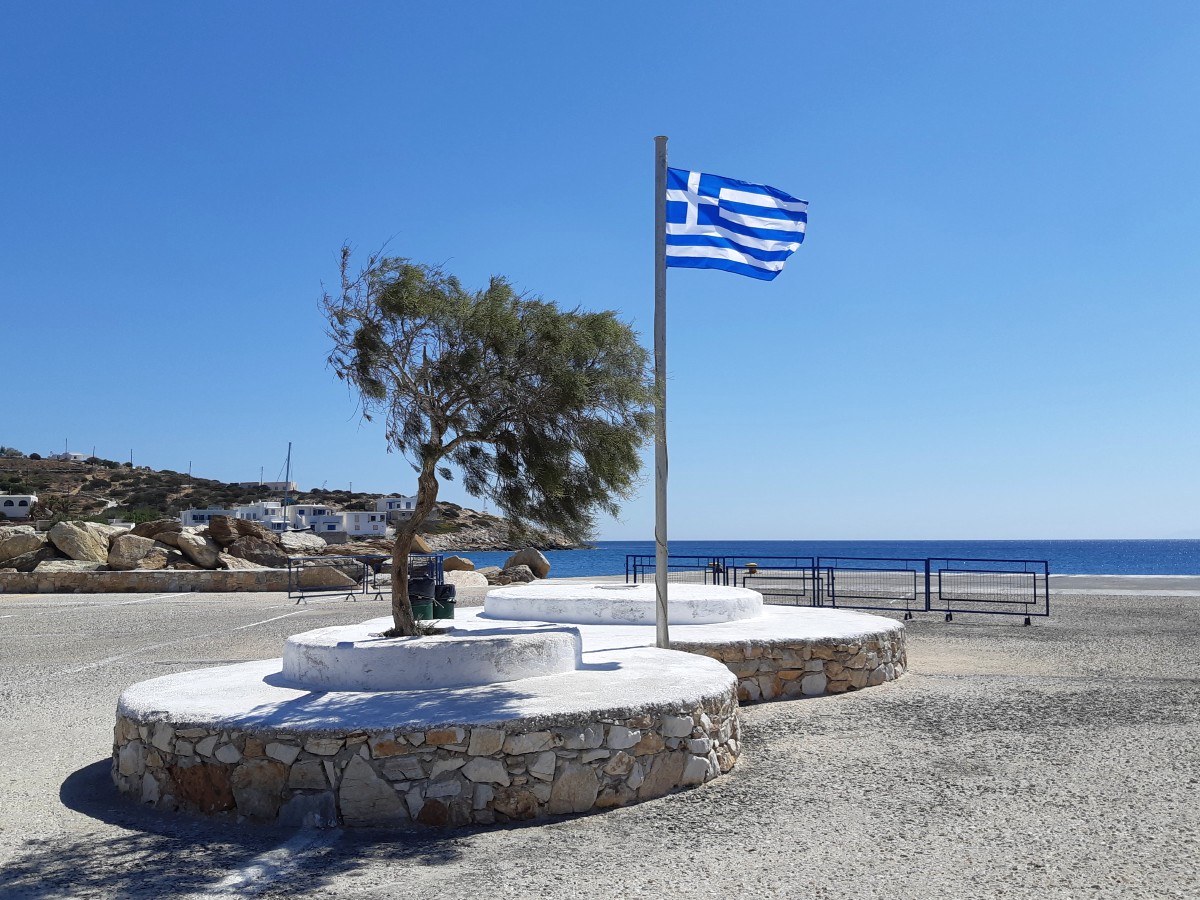
Flags during Byzantine and Ottoman Greece
During the Byzantine and Medieval times, flags became commonplace all around Europe.
Emperors, nobles, lords and other rulers used them, often to indicate land boundaries of their kingdom. Flags were also popular in battlefield.
In 1453, the capital of the Byzantine Empire, Istanbul (known then as Constantinople) was captured by the Ottoman Empire. This was the beginning of a new era, where the concept of Greek ethnicity became important.
The eagle symbol, which had been carried on from the Roman era, appeared on most flags of the time. In addition, a new symbol, the cross, was introduced, often accompanied by a depiction of a Christian saint.
While red was still a favourite color, other shades were gradually introduced, including white, blue and black.

The flag of Greece during the Greek Revolution
Year 1821 marked the beginning of the Greek War of Independence against the Ottoman Empire. Today, Greeks all around the world celebrate Greece Independence Day on the 25th of March.
Throughout the preceding decades, numerous regional flags and symbols were in use. Since the Revolution lacked central leadership, every local leader and chieftain came up with their own flag version.
The local leaders designed these revolutionary flags based on their personal preferences, historical knowledge, religious attachment and many other factors. Still, there were several common features.
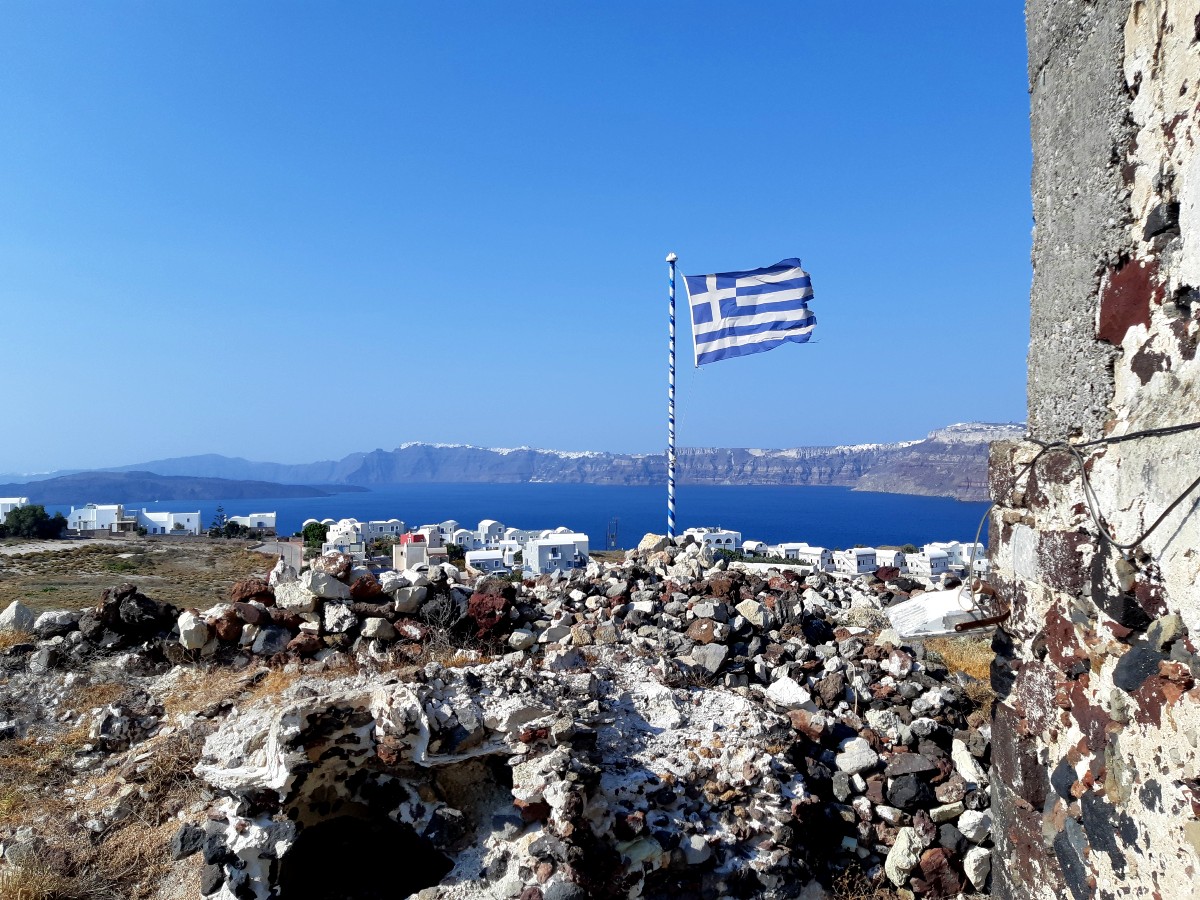
The Greek flag during the Revolution
The cross, a symbol of Greek Orthodox Christianity, was the most recurrent feature on regional flags. It indicated religious devotion, and contrasted the Ottoman crescent moon.
Several other symbols were used during those times on the regional flags in Greece. Examples include the owl (wisdom), the eagle (freedom), the Phoenix (regeneration), the serpent (knowledge), the anchor (persistence) and the laurel wreath.
The most prominent colors in those local flags included white (freedom / brotherhood), red (blood / patriotism) and black (sacrifice / death). Yellow and various shades of blue were also common.
Furthermore, certain phrases were often quoted on Greek flags of the time. Two of the mottos most frequently used were “Freedom or death” and “With your shield, or on it”.
If you can read Greek, these are “Ελευθερία ή Θάνατος”, and “Ή ταν ή επί τας”, an ancient Spartan phrase.
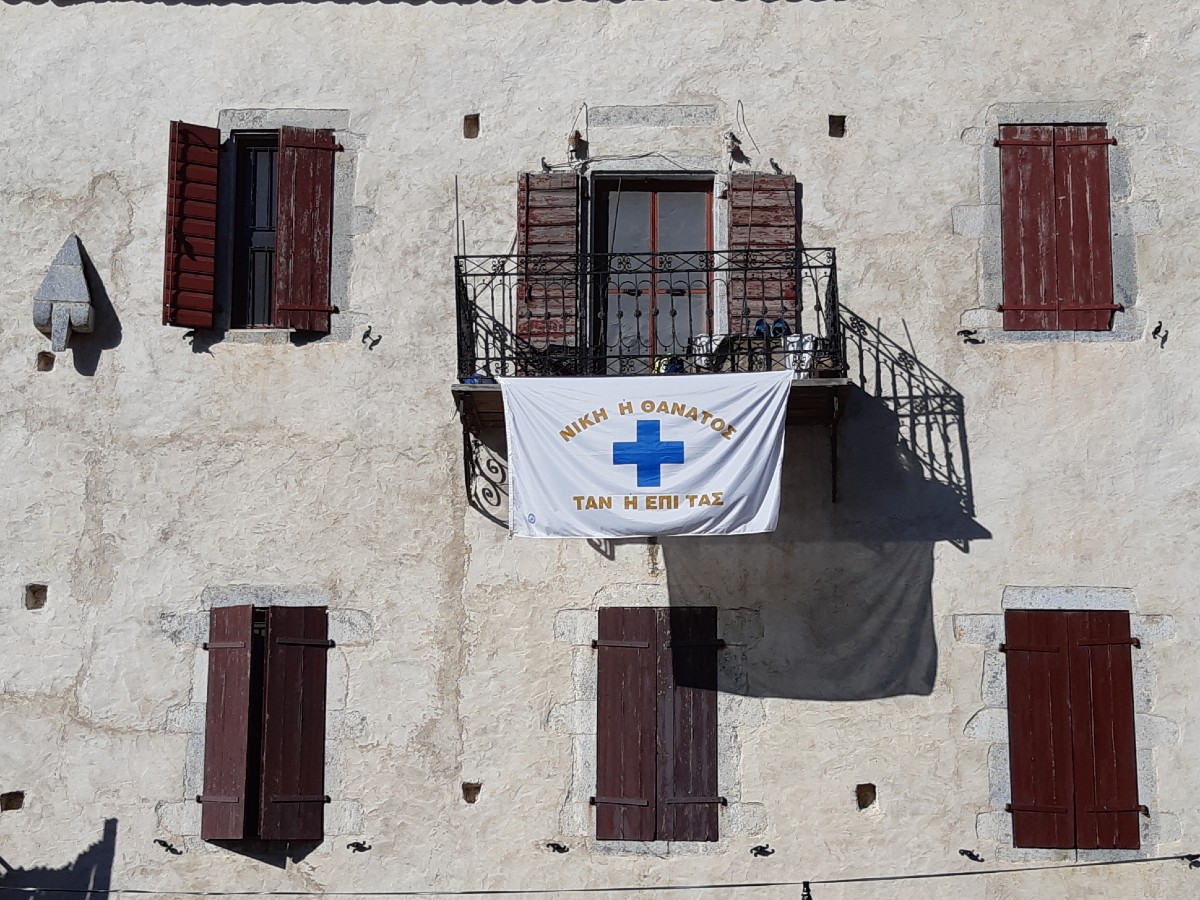
Even these days, you can see this latter motto if you travel to the Mani area in the Peloponnese.
The Greek flag becomes blue and white
The first blue and white flag in Greece appeared in 1807, in Skiathos island. This was a simple white cross on a blue square.
In 1822, a year after the Revolution began, the first Constitution of Greece was agreed upon. It included a few paragraphs on the Greek national flag.
For the first time, it was officially decided that the colors of Greece’s flag would be blue and white.
What do the blue and white colors represent?
According to one theory, those two colors were symbolic of the blue Aegean Sea and the white waves.
Others connect the white color to purity, and the blue color to God in the sky, who helped Greece defeat the Ottoman Empire.
One thing is certain though: Certain colors, such as red and green, were not favored, because they evoked memories of the Ottoman Empire and Islam.
The most common design of the Greek flag at the time was a simple blue background with a white cross, dividing it in four equal rectangles.
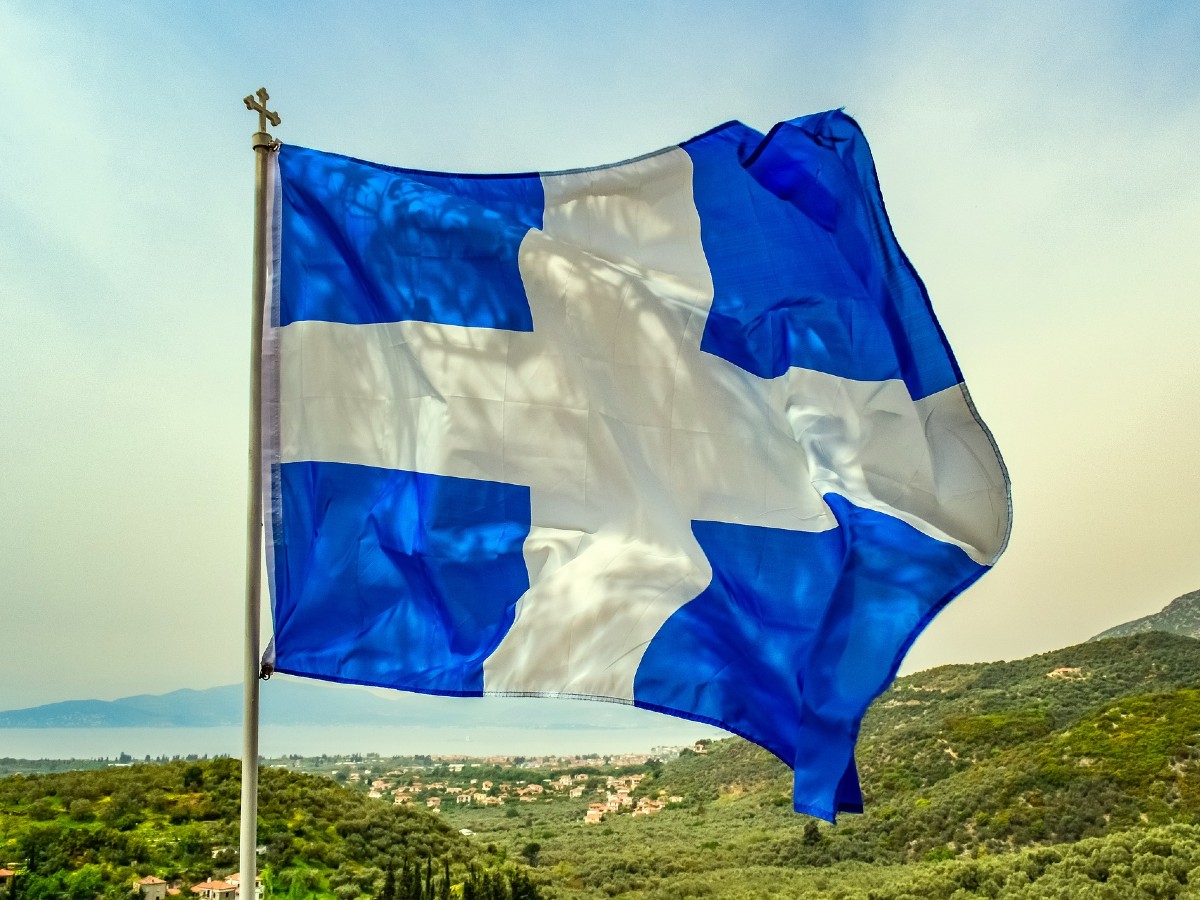
Several versions of a Greek flag appeared in the decades after the Revolution. Different flags were used for the army, the navy, and for display on public buildings.
Most of them featured the white and blue colors and the cross. Other elements were often included, similar to a coat of arms, such as the royal crown or an image of St George.
The official national flag of Greece is only a few decades old!
The variation of the Greek flag that we all know today, was only officially adopted οn December 22 1978.
According to one theory, the nine horizontal stripes represent the nine syllables of the phrase “Freedom or death” (Ε-ΛΕΥ-ΘΕ-ΡΙΑ Η ΘΑ-ΝΑ-ΤΟΣ).
Some people agree that the nine stripes represent the Nine Muses. These goddesses were daughters of Zeus, the king of the 12 Ancient Greek Gods in Greek mythology.
Finally, according to another point of view, the nine parallel stripes symbolize the white and blue waves in the Aegean sea.
Photos of the Greek flag on a ferry, right next to the Aegean Sea, are among the most typical images of Greece! You’ve probably taken plenty yourself when island-hopping around the Greek islands.
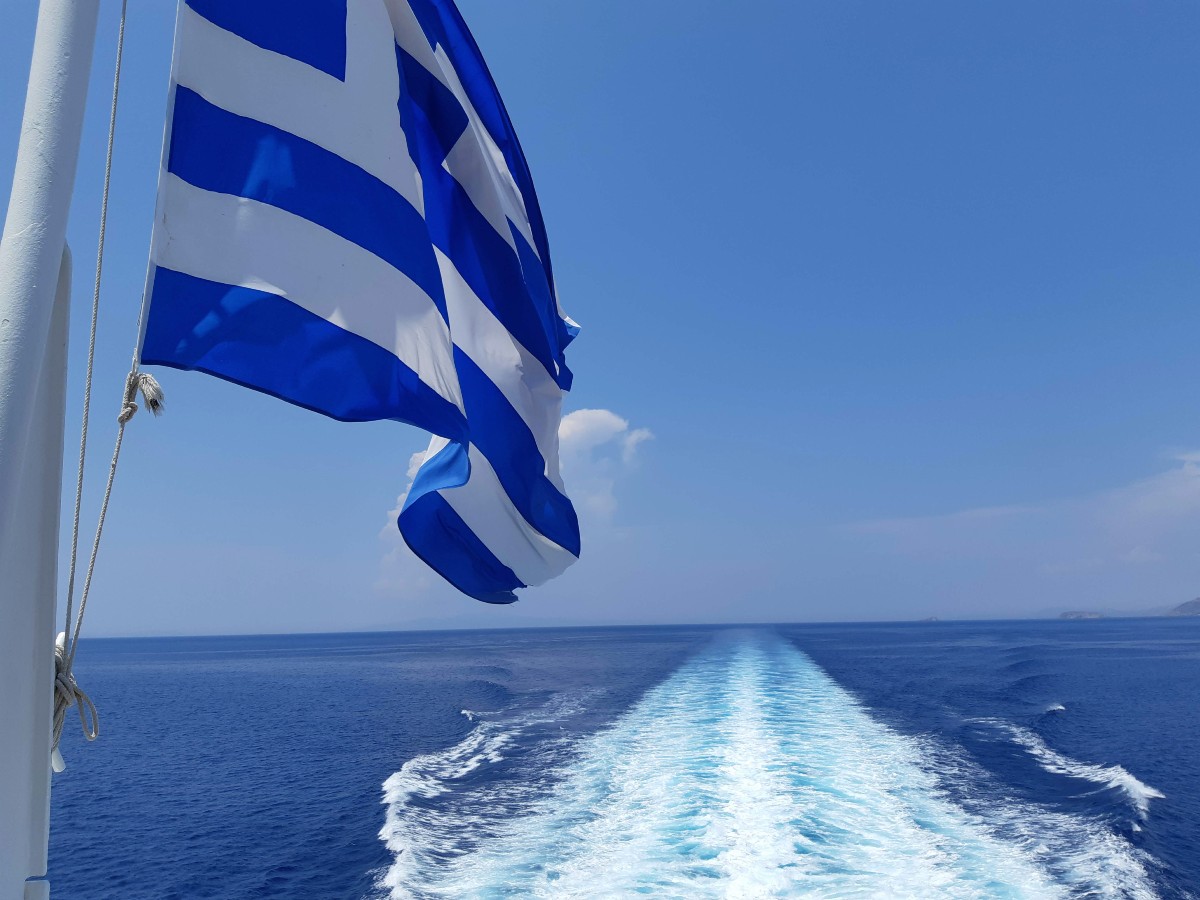
Interesting facts about the Greek flag
Here are some more interesting trivia about the Greek flag.

1. The Greek flag can only be manufactured in eight specific sizes, though the height-width proportions are always 2:3. An incredibly big Athens flag can be found up on the Acropolis Hill, measuring 6.5 x 4.3 meters!
2. Surprisingly, no precise tone of blue is mentioned in the specifications of the flag. A deep shade of blue is implied, where “blue” is defined as the color of the “calm sea” or the “cloudless sky”.
3. The flag remains raised from 08:00 until sunset in public buildings such as the Greek Parliament, ministries, embassies and schools. It is also used in army barracks, navy ships and commercial ferries. During certain public holidays, the flag can remain raised during the night.
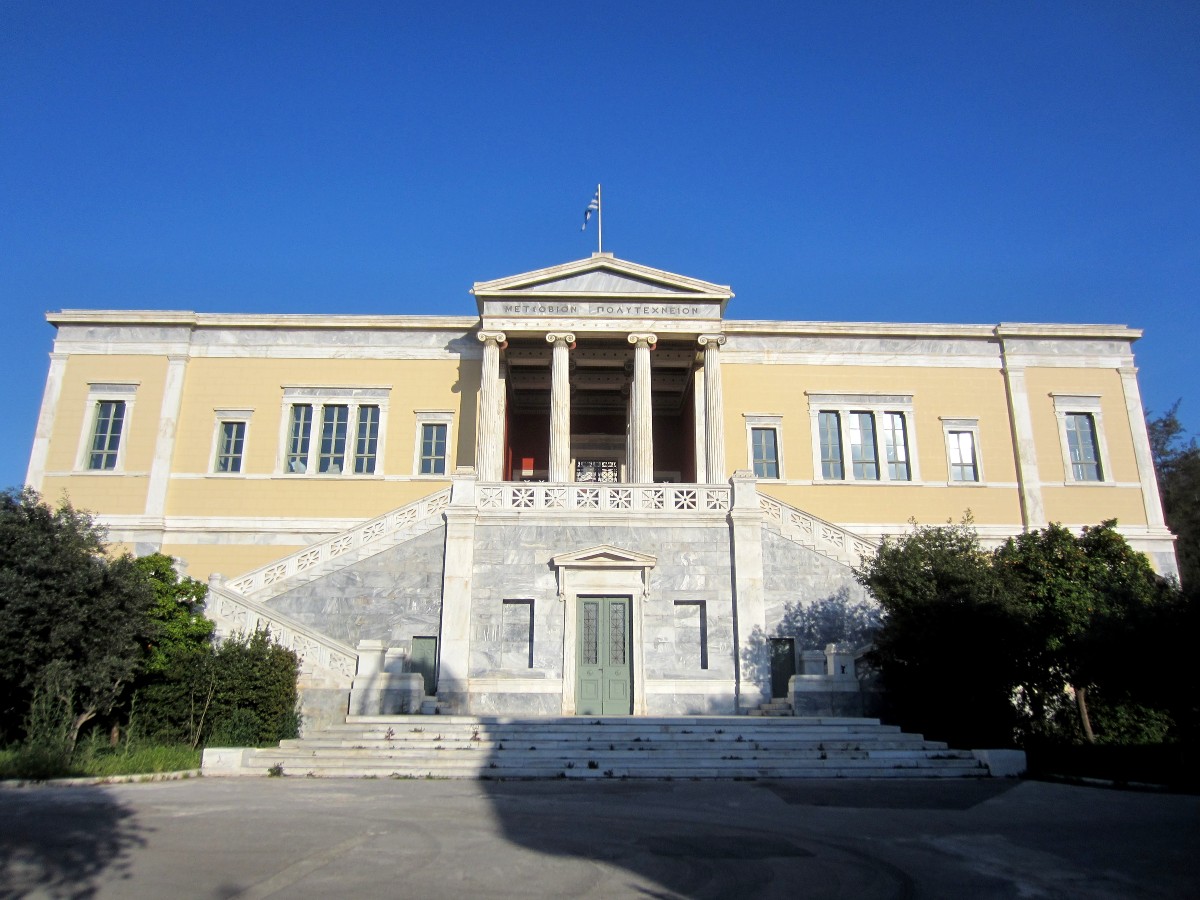
4. The flag needs to be attached to a pole with precise specifications – so, for example, it cannot be hanging off a balcony.
5. The flag of Greece cannot be used for commercial or advertising purposes, or as a banner for any union, association or organization.
6. A Greek flag that has been worn out (e.g. due to strong winds) should not be placed in the trash. Instead, it needs to be properly disposed of, ideally through a ceremonial fire.
7. Any person who removes, destroys, disfigures or defiles the official flag, is punishable by imprisonment of up to two years, or a fine.
Looking for more facts? Here are all the specifications (in Greek).

And one last trivia! Since 1928, during the Olympic Games, Greece is always leading the opening ceremony, known as “the Parade of Nations”.
During the 2004 Olympics, which were hosted in Athens, the flag led the parade as usual, and the Greek national team walked in last.
FAQs about the Greek flag
Here are some commonly asked questions about Greece’s national flag:
What colors are the Greek flag?
The flag of Greece has nine stripes, which are blue and white. There is also a white cross on a blue square, on the top left corner.
Why are there 9 stripes on the Greek flag?
There are many theories explaining the nine stripes on the flag. According to the most common theory, they are said to represent the nine syllables of a Greek phrase translating into Freedom or Death.
What is the ancient Greek flag?
Ancient Greece wasn’t a country, so there was no Greek flag back then. That said, the army of Alexander the Great appears to have used large red flags, during warfare.
What was the Greek flag before 1978?
After the Greek Revolution, there were several versions of the flag in Greece. They included blue and white colours, the cross, and maybe a few more symbols. in 1978, the current version was officially adopted.
What color blue is the Greek flag?
Surprisingly, the exact shade of blue is not defined. It can be dark blue, or light blue.
I hope this article has shed some light on the origins of our blue-and-white flag. Here are a few more that you should find interesting.
- Religion in Greece
- Blue and white buildings in the Cyclades
- Ancient theatres in Greece
- The evil eye in Greece
- Why coffee in Greece is important
- Useful words in Greek
- OXI day in Greece
- Greek celebrations
 Hi! My name is Vanessa, I am from Athens, and I love helping people discover more about my country. Follow me on my social media:
Hi! My name is Vanessa, I am from Athens, and I love helping people discover more about my country. Follow me on my social media:
- Facebook page and very active Facebook group
- Amazon
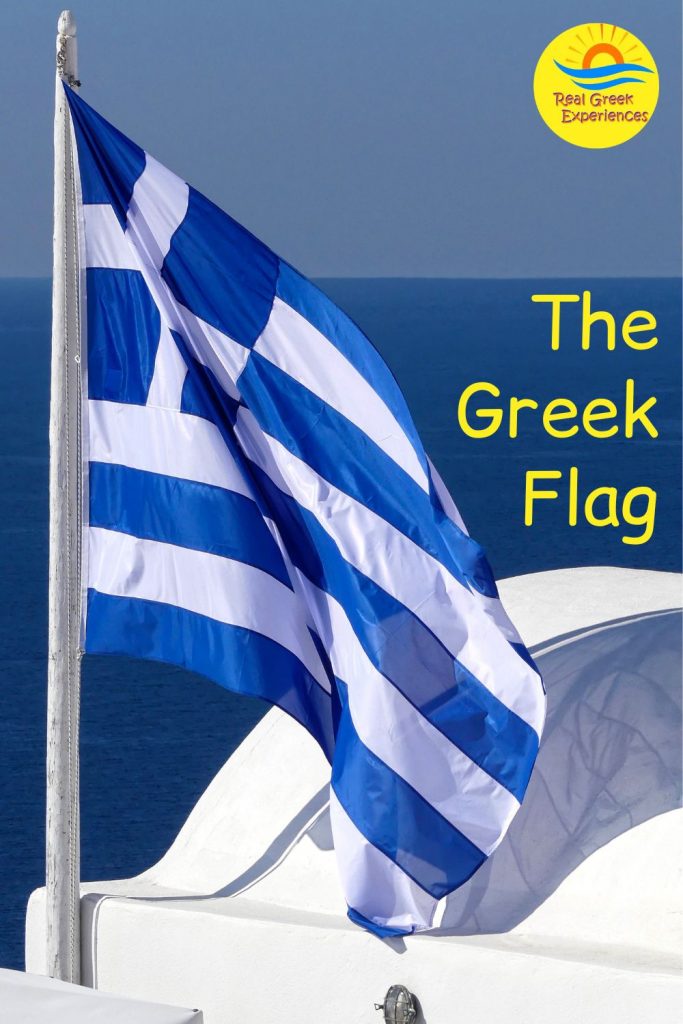

Hi Vanessa,
Thank you for this information.
I just have a objection, as the first colours of the Greek flag wasn’t deep blue (sea blue) but the light blue (ΓΑΛΑΝΌΛΕΥΚΗ ΣΗΜΑΊΑ), the colours of the Bavarian flag, King Otto of Bavaria brought to Greece.
Ligt blue greek flags can you still find in several countries selling souvenirs.
It was a political need to change later on the flag colour to deep blue and name it as the colour of the sea.
🙏
Hello Nireas and thank you for your comment! The first Greek flag was defined in the first national assembly (Α εθνοσυνέλευση) in 1822, when Otto was only 7 years old – he became king of Greece in 1832. The 1822 description mentions the word “κυανό” – των μεν κατά γην δυνάμεων η σημαία, σχήματος τετραγώνου, θα είχεν εμβαδόν κυανούν, το οποίο θα διηρείτο εις τέσσαρα ίσα τμήματα από άκρων έως άκρων του εμβαδού. I also found some sources mentioning that Otto changed the shade of blue to a lighter one, to match the colours of the Bavarian flag, but there is so much information out there, I thought I’d stick to what I thought were the basics.
Check out what google brings up for “cyan”… it’s definitely not what we call κυανό!
{Btw, according to the well-known Babiniotis dictionary, κυανό is defined as βαθύ γαλάζιο, and γαλάζιο is defined as “αυτός που έχει το χρώμα τού
ανέμελου ουρανού ή τής ήρεμης θάλασσας”. If you have a better english word for the mundane “blue” that I have used in the article, I’d love to know!}
Thank you for your insights. For the last 15 years we have been ‘frequent ‘visitors to your WONDERFUL country. If we were not so old 70-80 , we would stay for months rather than weeks.
You are not old! I hope you can return for many, many years!!!